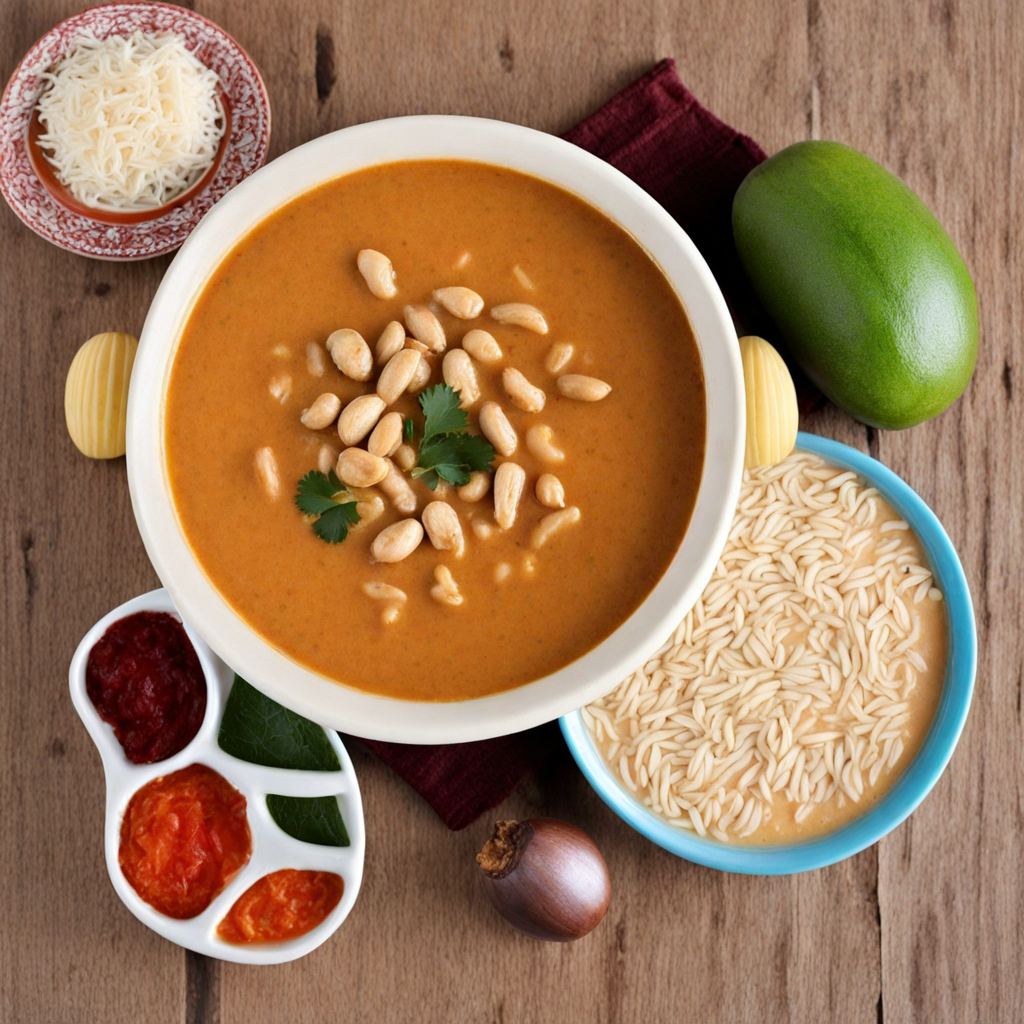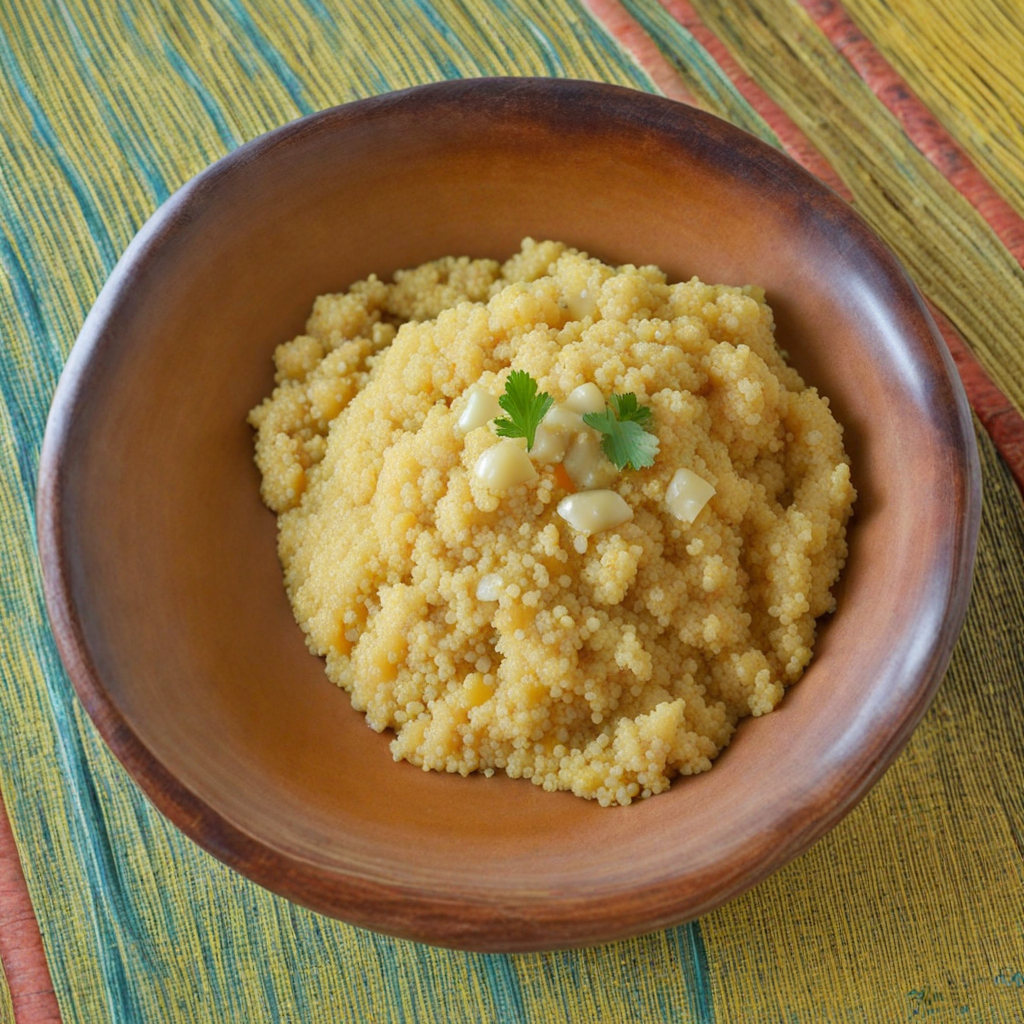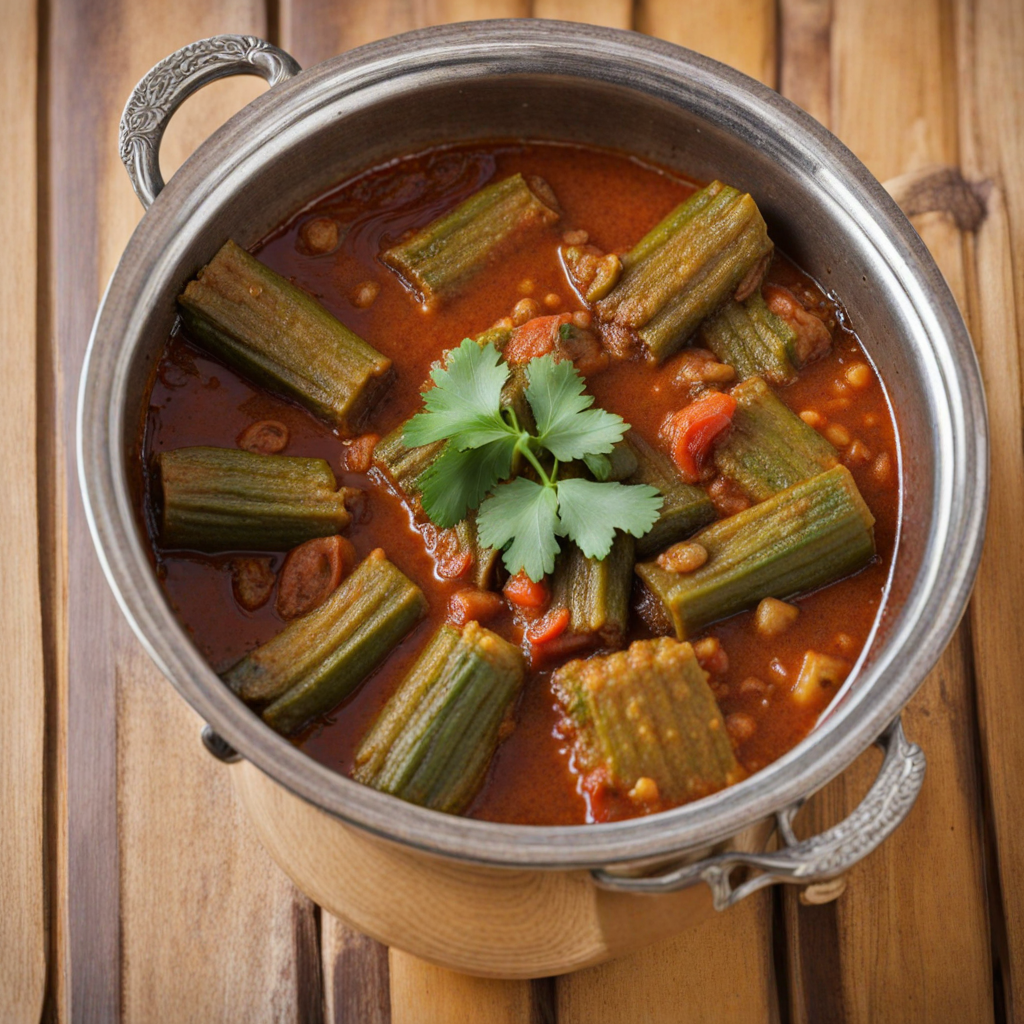Senegalese Peanut Soup
Senegalese Peanut Soup, known as "Maffe," is a rich and hearty dish that exemplifies the vibrant flavors of West African cuisine. This comforting soup is primarily made from ground peanuts, which impart a creamy texture and a nutty flavor that sets the foundation for the dish. The base often includes a medley of vegetables such as tomatoes, onions, and sweet potatoes, which add depth and sweetness, while spices like garlic, ginger, and chili provide a warm, aromatic kick. The combination of these ingredients results in a soup that is not only satisfying but also packed with nutrients, making it a staple in Senegalese households. The preparation of Maffe is as much about the communal experience as it is about the flavors. Traditionally, the ingredients are simmered together, allowing the peanuts to release their oils and create a luscious broth that envelops the vegetables. Variations of the soup can include additions like chicken, beef, or fish, each bringing its own unique twist to the dish. Served over a bed of rice or with crusty bread on the side, Senegalese Peanut Soup invites diners to savor the harmony of flavors that come together in every bowl. This dish is not just a meal; it’s a celebration of Senegalese culture and hospitality. Often enjoyed during family gatherings or special occasions, Maffe embodies the warmth and richness of the region's culinary traditions. The first spoonful reveals a delightful balance of savory and sweet, with the earthiness of peanuts complemented by the bright notes of fresh vegetables. For those looking to explore new tastes, Senegalese Peanut Soup offers an unforgettable journey through the heart of West African flavors.
How It Became This Dish
The History of Soupe d'Arachide Sénégalaise Soupe d'arachide Sénégalaise, or Senegalese peanut soup, is a traditional dish that encapsulates the rich culinary heritage of Senegal. Known for its creamy texture, nutty flavor, and vibrant use of spices, this dish serves not only as a staple food but also as a cultural symbol of Senegalese identity. Its origins, cultural significance, and development over time reflect the historical tapestry of the region, influenced by geography, colonization, and the blending of diverse culinary traditions. #### Origins The roots of Soupe d'arachide can be traced back to the indigenous peoples of West Africa, where peanuts (or groundnuts) are believed to have originated. Archaeological evidence suggests that peanuts were cultivated in the region over 3,500 years ago, making them a staple crop long before the arrival of European colonizers. The plant’s ability to thrive in the region's sandy soils and its nutritional value made it a favored ingredient in local diets. Peanuts became a significant part of Senegalese cuisine due to their versatility and the fact that they are rich in protein, making them an essential food source. This legume became integrated into various traditional dishes, reflecting the agricultural practices and dietary needs of the local communities. The first documented recipes for peanut-based dishes in Senegal appeared in the 19th century, but the practice of incorporating peanuts into soups and stews likely predates this documentation. #### Cultural Significance Soupe d'arachide is not just a meal; it is a representation of Senegalese culture, reflecting communal values and the spirit of sharing. In Senegal, food is often served in a communal manner, where family and friends gather around a single bowl, fostering connections and reinforcing social bonds. The preparation and sharing of Soupe d'arachide during communal gatherings, celebrations, and religious ceremonies highlight its role in bringing people together. The soup is often served during significant occasions such as weddings, religious festivals, and family gatherings, symbolizing prosperity and unity. Beyond its nutritional value, it plays a role in rituals and is sometimes seen as a means of blessing a new home or celebrating a bountiful harvest. The dish embodies the hospitality of Senegalese culture, where sharing food is a sign of respect and generosity. #### Ingredients and Preparation The primary ingredient of Soupe d'arachide is, of course, peanuts. The dish typically features ground peanuts or peanut butter, which is combined with various vegetables, such as onions, tomatoes, and sweet potatoes, and sometimes includes meat or fish for added flavor and protein. The use of spices like chili peppers, garlic, and ginger further enhances the soup's flavor profile, giving it a unique character that distinguishes it from other peanut soups found in different cultures. Preparation of Soupe d'arachide involves simmering the ingredients together to create a harmonious balance of flavors and textures. The soup is often served with rice or bread, allowing diners to enjoy the rich, creamy consistency. The emphasis on fresh, local ingredients reflects Senegal's agricultural practices and the importance of seasonal produce in traditional cooking. #### Development Over Time As Senegal faced external influences, particularly during the colonial period, the culinary landscape evolved. French colonization brought new ingredients, cooking techniques, and culinary styles to the region. While Soupe d'arachide remained a beloved staple, its preparation and presentation began to incorporate these new influences. The introduction of French culinary techniques, such as emulsification and the use of cream, began to alter the texture and richness of the soup, leading to variations that appealed to different palates. In contemporary Senegal, Soupe d'arachide is still a cherished dish, but it has also adapted to modern tastes and lifestyles. Urbanization has led to the rise of street food vendors and restaurants offering quick and accessible versions of traditional dishes. While the essence of the soup remains the same, there are now variations that cater to diverse dietary preferences, including vegetarian and vegan adaptations, making it a versatile option for a wider audience. Globalization has also played a role in the evolution of Soupe d'arachide. As Senegalese diaspora communities have spread across the globe, they have brought their culinary traditions with them. This has led to the emergence of Senegalese restaurants in cities worldwide, where Soupe d'arachide is often featured on the menu. The dish has gained recognition beyond Senegal, introducing international diners to the flavors and cultural significance of this traditional soup. #### Modern Interpretations Today, chefs in Senegal and beyond experiment with Soupe d'arachide, incorporating local and international ingredients to create innovative interpretations of the dish. Some may add coconut milk for a tropical twist, while others might infuse it with spices from the Middle East or Asia. These modern takes maintain the spirit of the original dish while showcasing the adaptability and creativity of Senegalese cuisine. Moreover, Senegalese peanut soup has entered the realm of food tourism, attracting culinary enthusiasts eager to experience authentic Senegalese flavors. Cooking classes and food tours often include lessons on making Soupe d'arachide, allowing participants to connect with the culture on a deeper level through hands-on experiences. #### Conclusion Soupe d'arachide Sénégalaise is more than just a dish; it is a reflection of Senegal’s rich history, cultural values, and adaptability. From its ancient roots in West African agriculture to its contemporary status as a beloved comfort food, this peanut soup tells the story of a people who have embraced their culinary heritage while allowing it to evolve. It serves as a reminder of the communal spirit that food embodies, bridging generations and cultures through shared meals. As it continues to be enjoyed both in Senegal and around the world, Soupe d'arachide remains a testament to the enduring power of food to connect, nourish, and celebrate life.
You may like
Discover local flavors from Senegal







